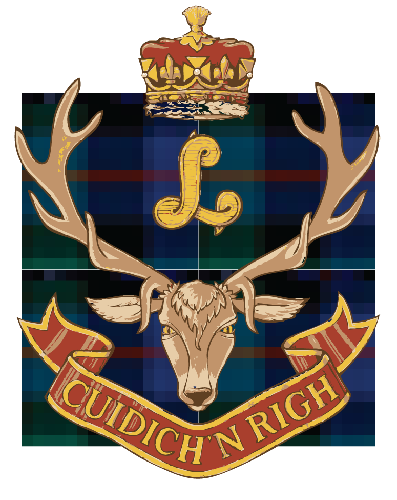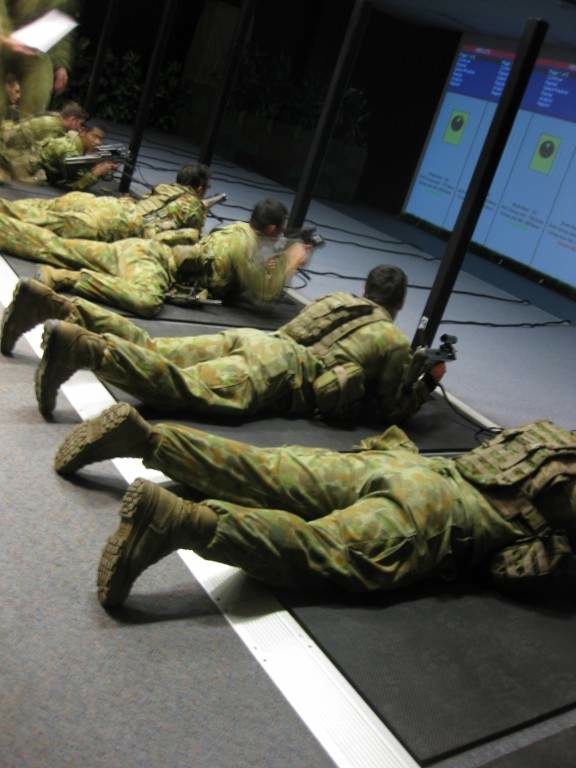Letter from Corporal Kenneth Galbraith
Letter from Corporal Kenneth Galbraith of the Seaforth Highlanders of Canada who is currently attached to the 5th/6th Royal Victoria Rifles while temporarily living in Australia.
Summary:
Through the Army Reserve Foreign Service Arrangement, I have been attached to the 5th/6th Royal Victoria Regiment (5/6 RVR), a reserve infantry battalion from Melbourne, Victoria, Australia, and with 700 members, is the largest reserve unit in Australia. As a section commander in the training platoon, I am participating in the NCO training stream. Administrative delays and budget cuts have reduced training days and weekend exercises, allowing for only 16 paid days since my arrival. The exercises I have attended have been challenging and well organized. Despite the reduced training calendar, I have been welcomed by my Australian counterparts and the training I have received has been challenging and affective. I look forward to bring back my lessons learned to Canada.
I have now been in Australia for 14 months, living in a suburb just outside Melbourne, which is the capital of the State and the second biggest city in Australia with a population of 6.2 million. Melbourne a coastal city and is like Vancouver in many ways, but with half the average rainfall and temperatures that rarely dip below 5C in winter and can peak at over 40C during the summer. Several weeks after my arrival in Melbourne, late October 2011, I met with the RSM of 5/6 RVR, who greeted me warmly, familiarized me with the unit’s structure, training program and had me outfitted with Australian stores. Unfortunately, I would not start parading until May 2012 due to some administrative hurdles but, during this time, I was able to attend Remembrance Day and Australia Day ceremonies in a civilian capacity as well as visit the Australian War Memorial in Canberra.
Training with the 5th/6th
5/6 RVR follows a similar schedule as the Seaforth Highlanders of Canada by training one night a week, one weekend a month, one 2 week-ex at the end of the training year, followed by summer courses. There are 4 companies meeting at 4 different armouries around the city, and when I began training, 5/6 had a platoon overseas providing oversight of UN security forces in East Timor.
I began parading at A Coy’s armoury on May 15th and after making the rounds with company leadership, was placed as acting 2IC of the training section, as the majority of the Coy’s NCOs were overseas. Since then I have been participating in the NCO training stream, as well as preparing training, handling paperwork and supervising activities for the new recruits. In September 2012 I was made full section commander.
Most of the weaponry, drills, and soldier skills required for the Australian Army are very similar to Canadian ones, especially with the Australians recently moving to the “2012” system of 8 man sections operating in 4 man teams. Notable exceptions to the similar weapons are the bullpup Steyer AUG Assault Rifle and the F1 Grenade, but other than minor details in sighting, the rest of the weaponry is what I have trained on in Canada.
By joining training halfway through the year, I missed all mandatory training. This limited my participation in a June weekend exercise (I received F1 grenade training that weekend instead of participating in Pl level operations), but have taken the requisite Styer tests and was able to fully participate in a five day exercise in September, though was not able to carry live or blank rounds.
In September I participated in the other notable experience of my training thus far: a 5 day exercise at nearby Puckapunyal Army Base (“Pucka”). The first day was practice of standard drills and WETS training (FATS equivalent) and general prep based on Pl level orders. I was carrying a Steyer, but was not carrying blanks, due to my lack of formal qualification on the weapon.
Days 2 and 3 were section level stand based training, with each stand being spaced several km apart. All training was scored on basic soldier skills, and included section attacks, mine drills, multi-casualty first aid triage scenarios, all arms call to fire scenarios, stores carries and more. Well organized, with both immediate feedback and an overall debrief at the end of the ex. My section was comprised of partially trained soldiers from across the company, (equivalent of BMQ qualified troops), but rose to the challenge.
The final two days were Pl level operations, culminating in a final platoon attack against an enemy position. My IC tore a ligament during a patrol, and was med-evac’d several hours before the final attack, leaving me in my first command role! After coming under contact and leading the PL O’s recce, my section was to lead the designated sections into position and act as rear defence during the assault. As the assaulting section was moving to position, flanking enemy engaged them, leaving my section available to conduct the main assault.
The 2013 training year started up last week, with a weekend of mandatory training. Though not qualified on the Steyer, I was top shot on the WETS shoot, and completed all required training.
Upcoming Training:
Special training has been arranged for me, comprising of the weapons handling components of Australian Basic. This two days of courses will qualify me on the Steyer and F89 (aka C9), bypassing the first month of basic training. Additional training will comprise of auditing the other courses for their weapon components. Once trained to the infantry standard, other courses will be available to me, depending on working days available.
Personal Notes:
It has been a fun and challenging experience training with the Australians, who train to a high standard and expect the same from me. Acting as a JNCO from day one has intensified training and further motivated me to learn Australian SOPs.
The training conditions are hotter than I have experienced in Canada, especially with the majority of my training in winter warfare/survival. With temperatures topping over 40 degrees C and the UV index reaching 16 (with 11+ being extreme) some training days. The Australian standard issue is dessert boots and DPCU, which is lighter in colour and construction than CADPAT. I definitely stand out and during Battalion level exercises I spend most of my down time explaining where I’m from and dispelling some rumors about Canada! Stories about winter mobility training, which involved sleeping in igloos at -40C are always a crowd pleaser.
I participate in A Coy social events, and hold a position on the mess committee. For Remembrance Day, the company did not parade, but I made a presentation at a nearby high school about Canada’s role in the world wars as part of their Ceremony.
Included are the few pictures I’ve taken on exercise. Finding time to take many shots is difficult as with the training schedule curtailed, the exercises are high intensity.
Kangaroos and Wallabies are seen frequently while training, as Pucka’s ranges are full of them, and they need to be culled every few years. Most of the diggers are fed up with them as their droppings can make for an unpleasant firing position during section attacks, but I can’t help but smile at them.
Conclusion:
Training with 5/6 RVR is a challenging and rewarding experience. The Australian SOPs are broadening my capabilities as an Infanteer and the responsibilities of section commanding are improving my abilities as a JNCO. I look forward to my continuing training with the Australians.




